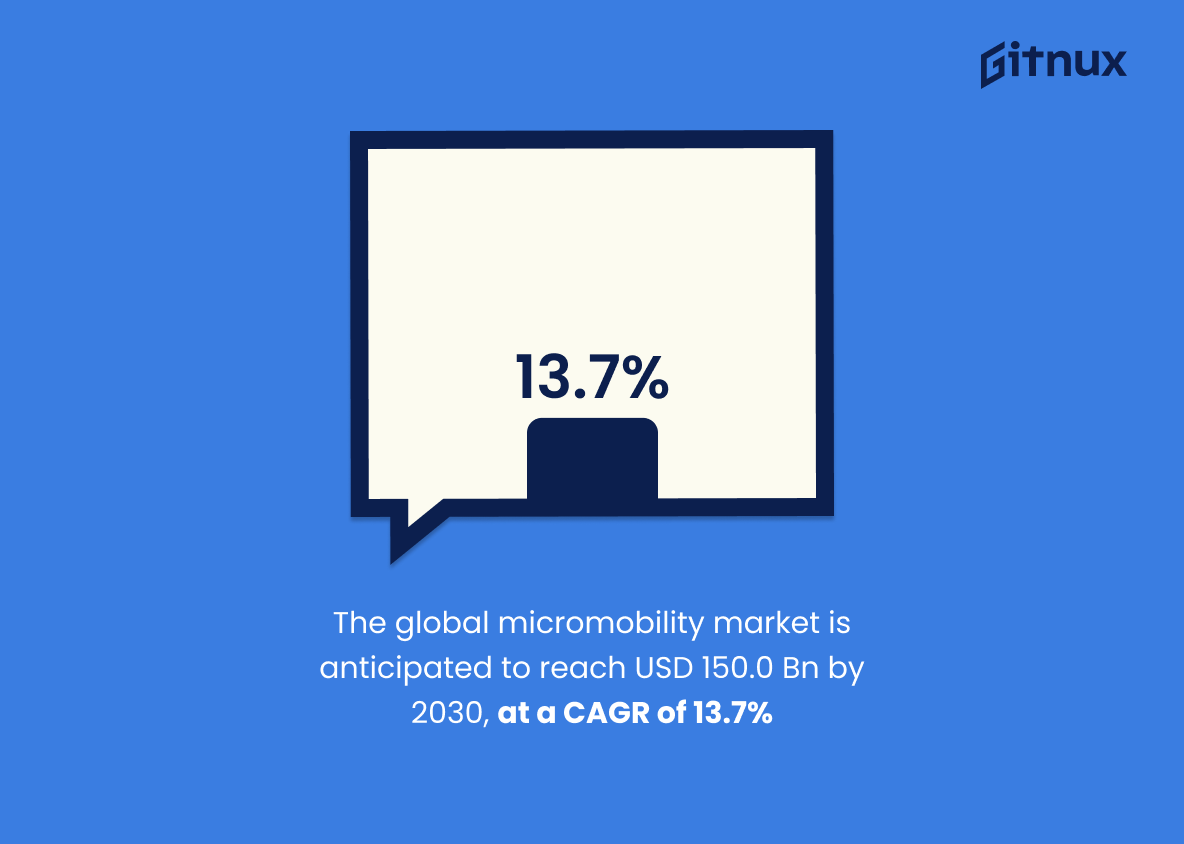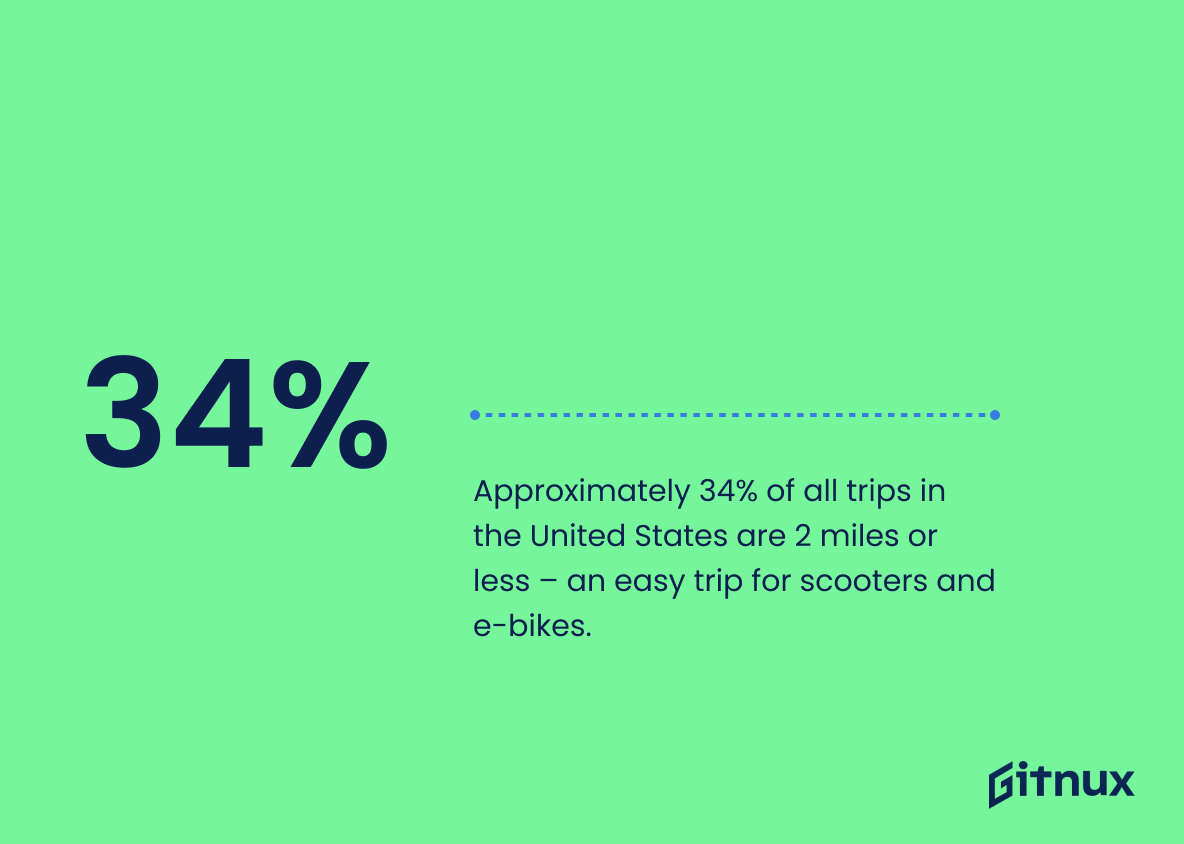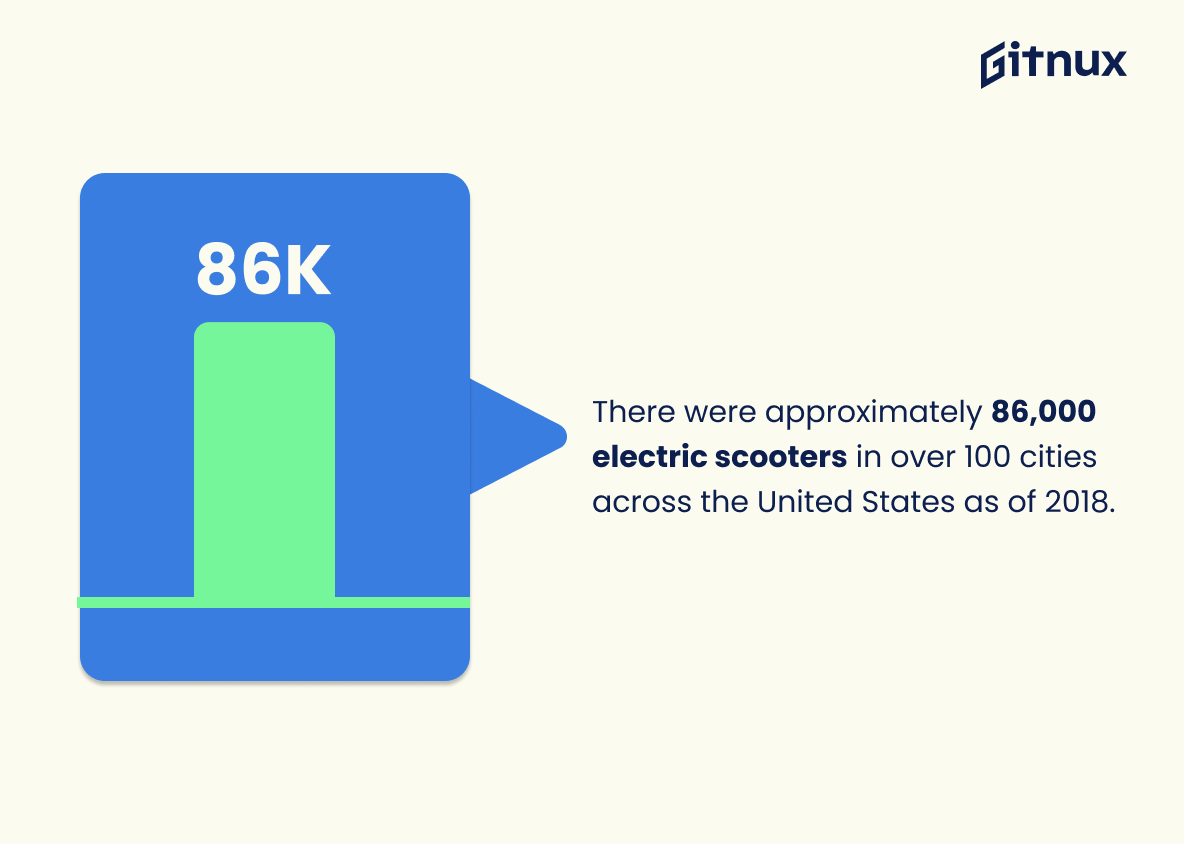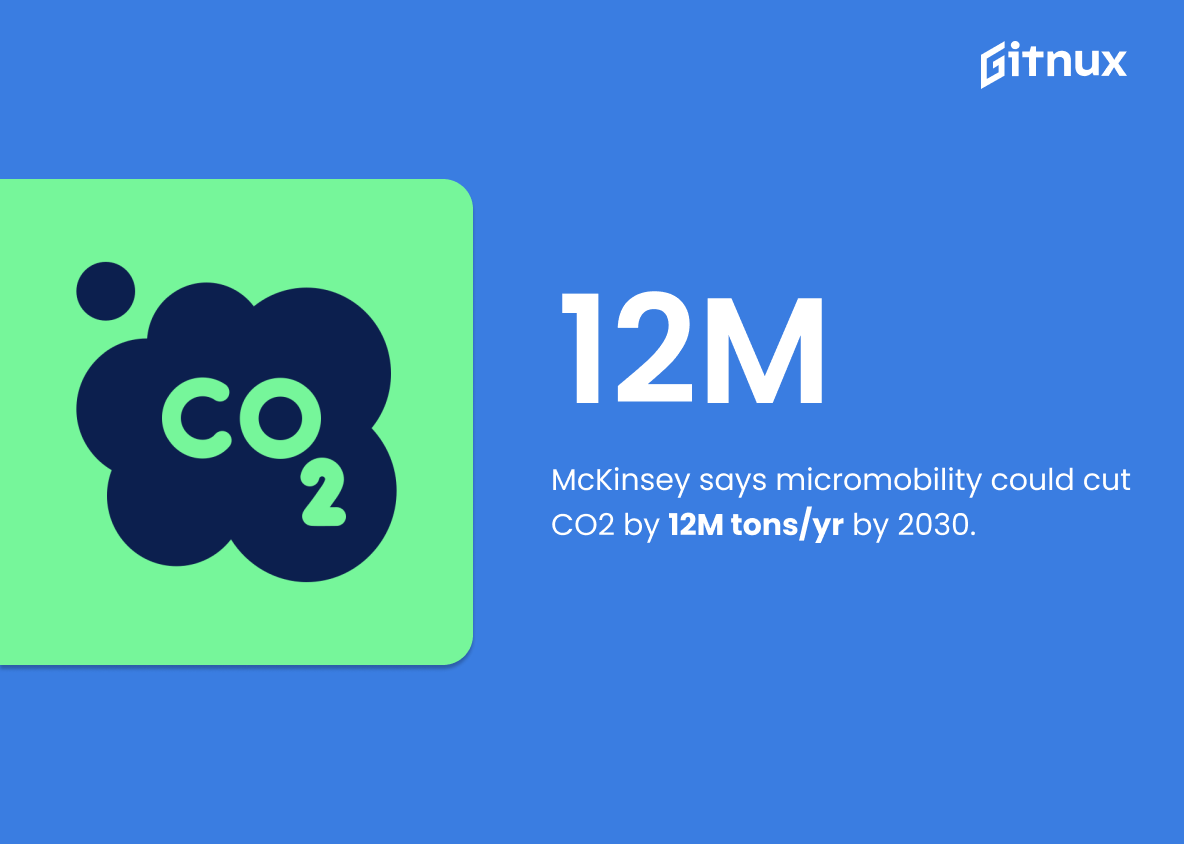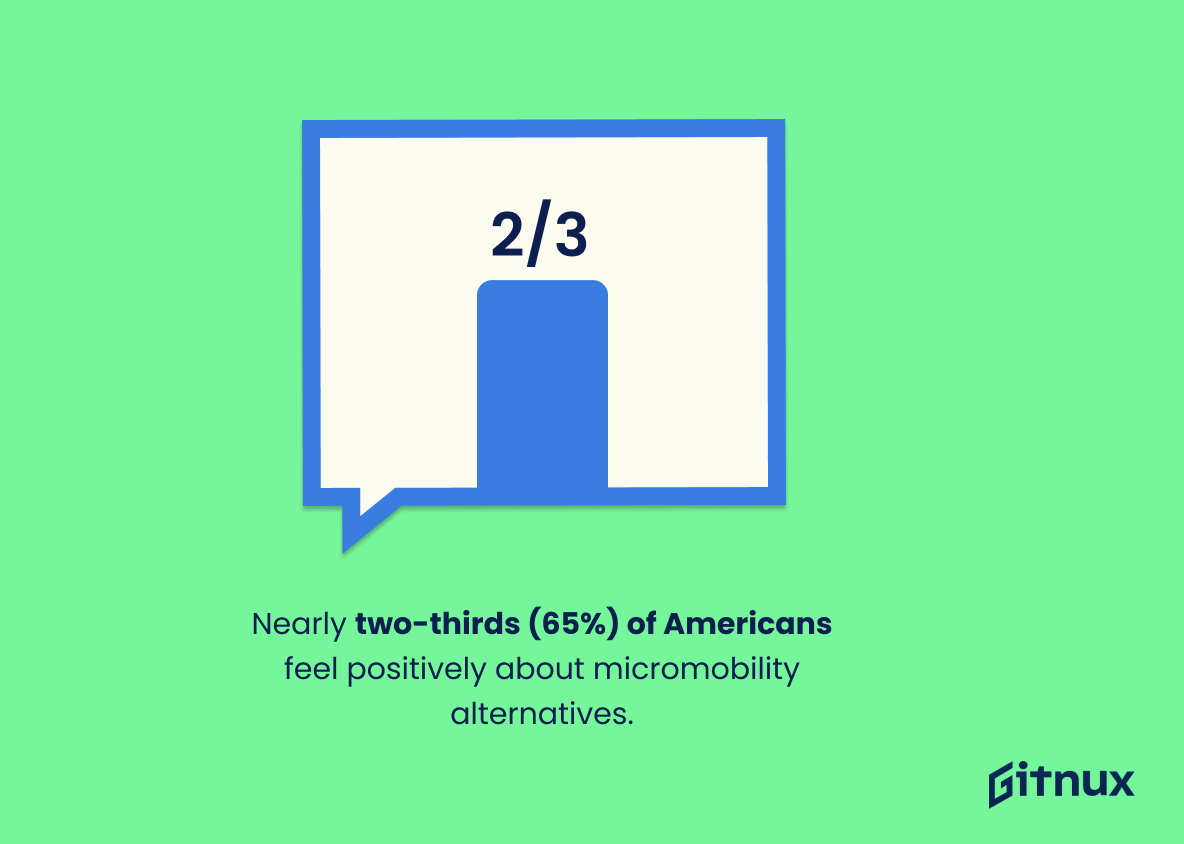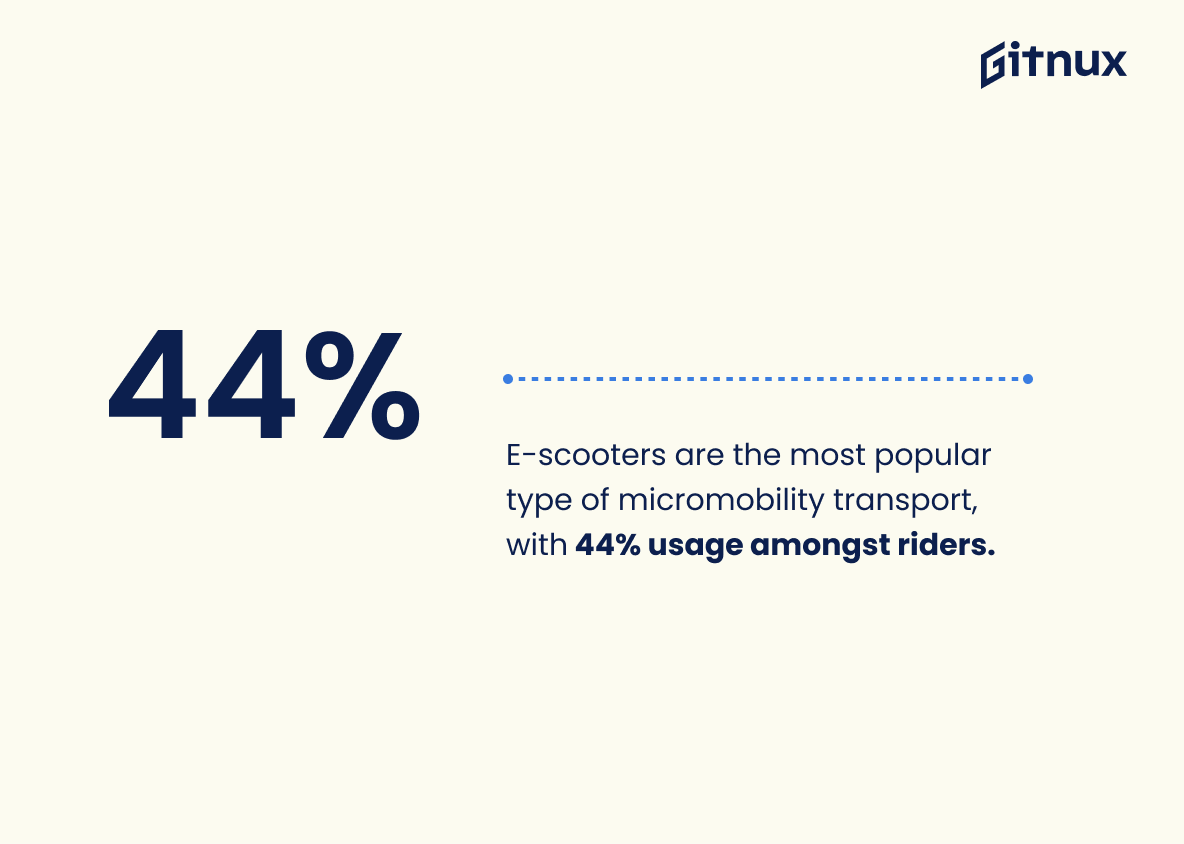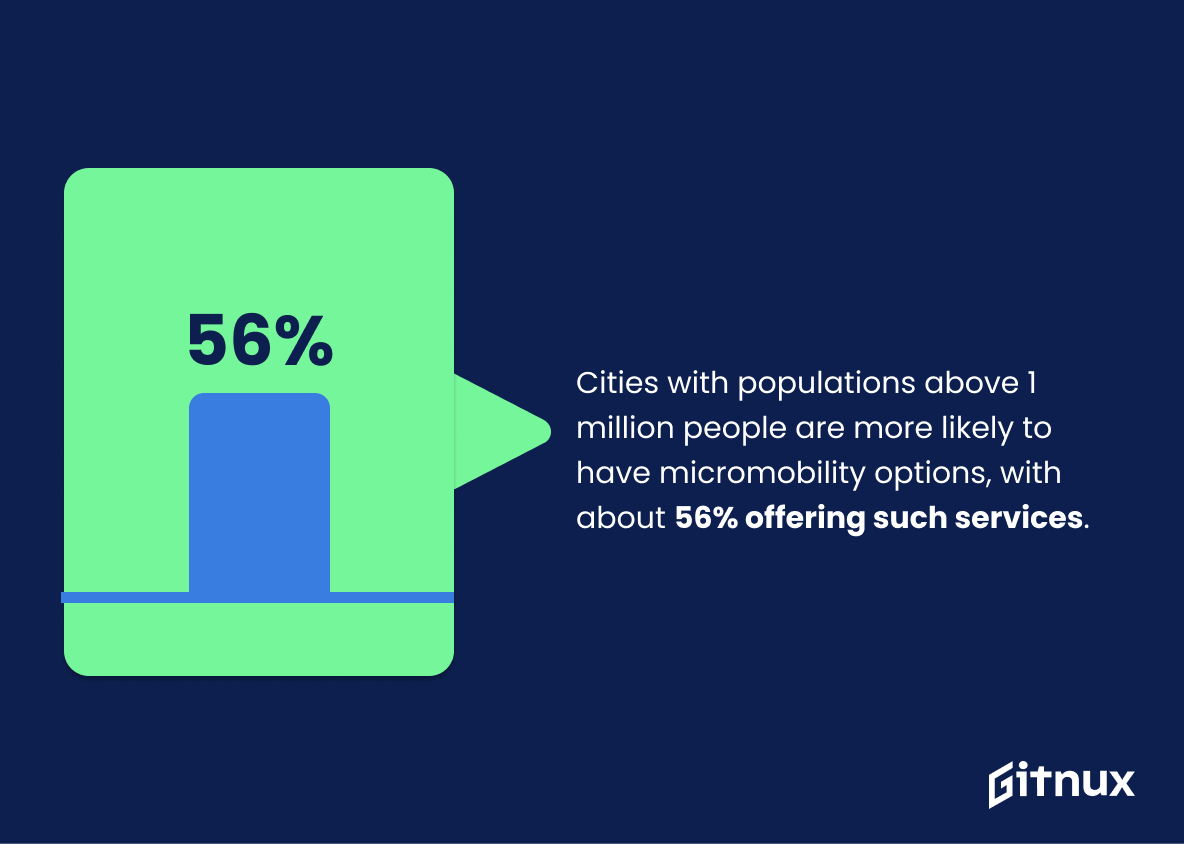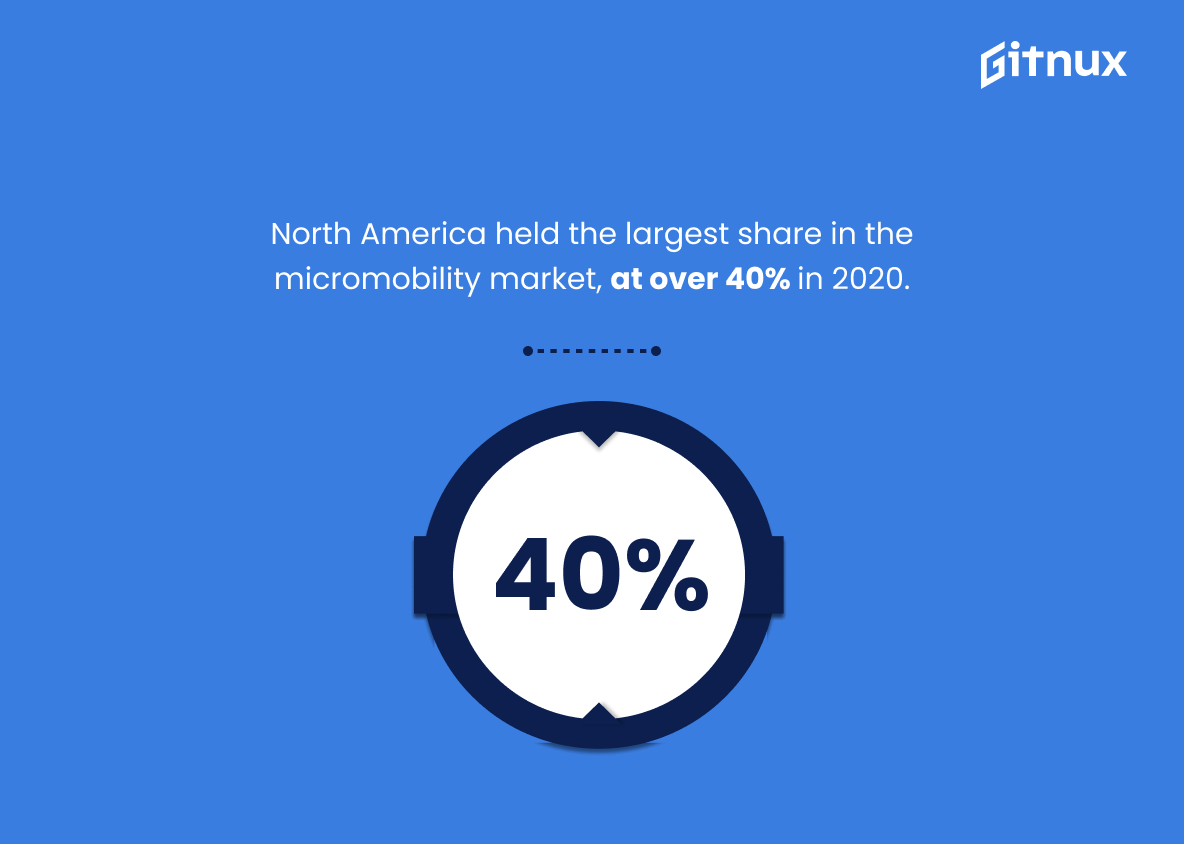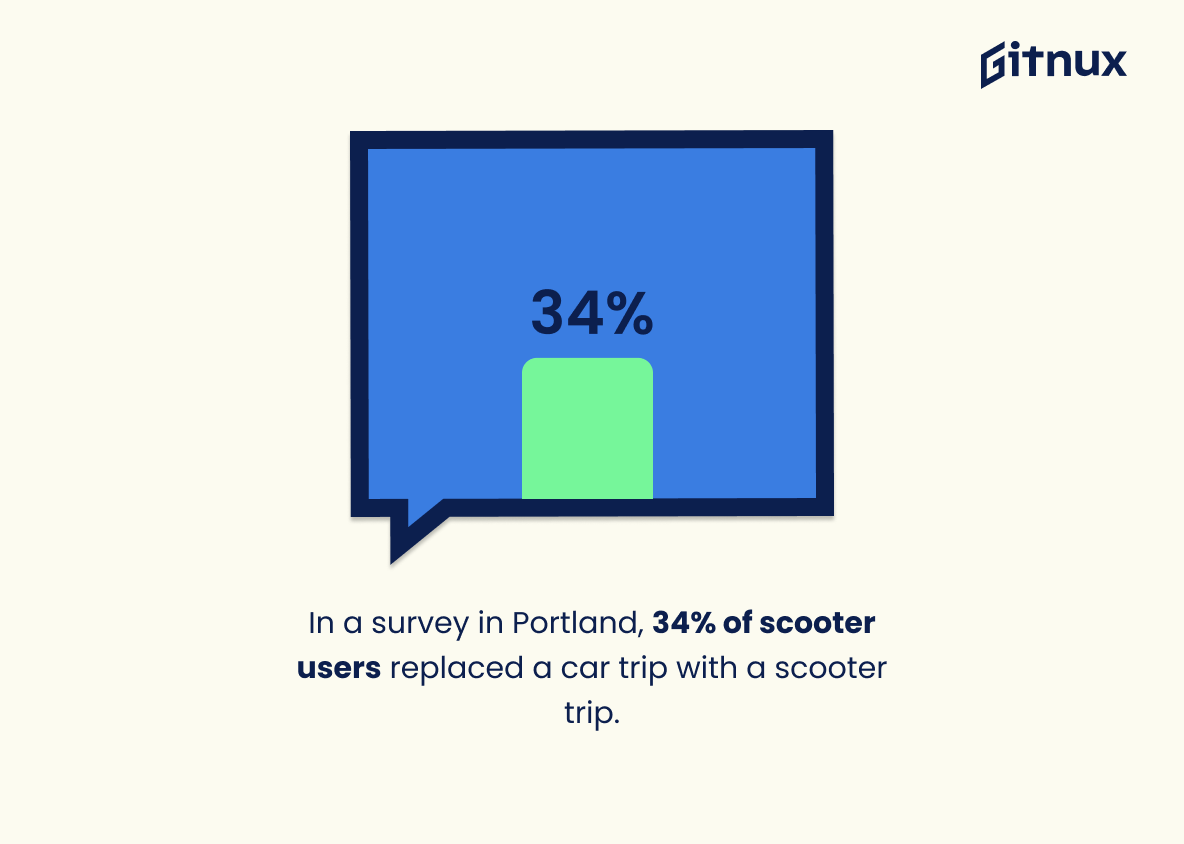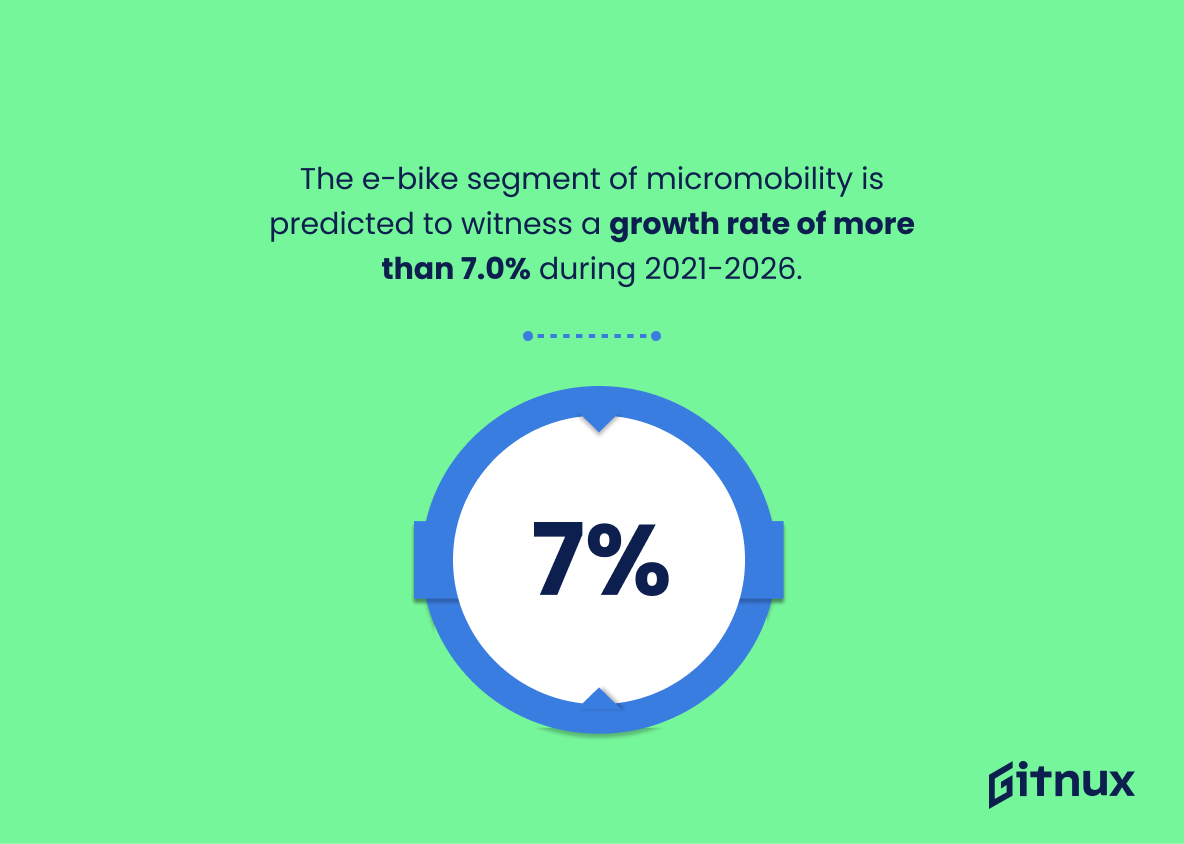Micromobility is changing the way we move around our cities and towns, offering affordable and sustainable transport solutions that promise to redefine urban commuting. From bike-sharing services to electric scooters, the micromobility industry is buzzing with significant growth and development. As the world grapples with pollution and climate change, understanding the profound impact of this industry has become essential. In this blog post, we’ll take a deep dive into the intriguing world of micromobility industry statistics, exploring the trends, growth projections, and emerging opportunities that are helping shape the future of urban transport.
The Latest Micromobility Industry Statistics Unveiled
Globally, the micromobility market size was valued at USD 26.04 billion in 2020.
Highlighting the astounding valuation of USD 26.04 billion for the global micromobility market in 2020 emphasizes the explosive growth of this sector. This figure underscores the sheer potential and vitality of the micromobility sphere. This is not just a testament to the industry’s financial clout, but it also indicates the burgeoning interest and engagement in this sector. As we delve into the granular figures, data trends and forecasts of the micromobility industry, this significant monetary mark serves as an overarching backdrop, showcasing the impact and the ongoing evolution of this disruptive field.
The global micromobility market is anticipated to reach USD 150.0 Bn by 2030, at a CAGR of 13.7%.
Delving into the numeric heartbeat of the micromobility industry, a fervent pulse of growth reveals itself: an anticipated leap to a mammoth USD 150.0 Bn by 2030, accelerated by a vigorous CAGR of 13.7%. This figure serves as the lighthouse in the foggy uncertainty of the future, signalling not only the vast potential of the market, but also the tectonic shifts in the transport sector that micromobility is set to drive.
The dynamic forecasted growth rate reflects the increasing receptiveness of the public to micromobility, a trend resultant from technologic advancements, environmental consciousness, and urbanization. It serves as both a powerful incentive and a strategic compass for existing players, potential investors, and policy makers. The prophecy of this future growth can ignite innovation, spark competition and shape regulatory landscapes, thus marking significant ripple effects across the industry.
In essence, this statistic stands as the golden thread, knitting together the diverse narratives of progress, profitability and potential that characterise the future of the micromobility industry.
Approximately 34% of all trips in the United States are 2 miles or less – an easy trip for scooters and e-bikes.
Peering into the lens of micromobility statistics, an intriguing landscape emerges when we consider that almost 34% of all trips undertaken in the United States measure just 2 miles or less. This nugget of wisdom underpins a golden opportunity for the micromobility industry to proliferate. Scooters and e-bikes, with their cost-effectiveness, portability, and eco-friendly characteristics, perfectly fit these short travel escapades. Thus, the mentioned figure serves as an insightful forecast of the abundant potential waiting to be tapped in this growing sector, redefining and restructuring our travel norms.
There were approximately 86,000 electric scooters in over 100 cities across the United States as of 2018.
Highlighting the presence of a staggering 86,000 electric scooters across over 100 U.S. cities as of 2018, casts a light on the burgeoning growth of the micromobility industry. This robust figure underscores the surge in acceptance and usage of eco-friendly commute options by the public. Such substantial adoption has, in turn, stimulated progression in the micromobility sector, encouraging new entrants, fostering competition, and driving innovation. It serves as a benchmark, effectively illustrating the enormity of the consumer base that blog readers, potential investors, or new market entrants should keep in mind while making business decisions related to this industry.
84.0% of all micromobility trips in 2018 took place in just four countries: China, the United States, Germany, and France.
Shedding light on the concentrated landscape of the micromobility market, an intriguing fact reveals that a hefty 84.0% of all micromobility trips in 2018 were cornered by just four countries: China, the United States, Germany, and France. This is a testament to the significant footprints of these nations in shaping the contours of the micromobility industry. The overwhelming dominance suggests that these regions serve as the primary hub, influencing key trends, innovations and regulations in this sector. Understanding this stronghold gives a bird’s eye view to stakeholders and policymakers about where the majority of the customer base resides, where policies and infrastructure are more accommodating, and where future competitors are likely to emerge from. This can guide strategy, investment, and policy-making decisions related to the micromobility industry, putting stakeholders on the fast track to success.
According to McKinsey, the micromobility industry has the potential to reduce CO2 emissions by up to 12 million tons per year by 2030.
Peering through the lens of this bold projection by McKinsey, we begin to unravel the significant imprint the micromobility industry could leave on our environmental landscape. Picture this – reduction of CO2 emissions up to 12 million tons per year by 2030. A statistic as compelling as this one paints not just a theoretical picture, but a seismic change in the way we understand transportation’s environmental impact.
Imagine the tangibility of that shift as it’s integrated into a blog post, touching upon the crucial topic of Micromobility Industry Statistics. This fact becomes more than just another number – it morphs into a powerful statement heralding the climate-positive potential of the micromobility industry. It’s like saying there lies a green warrior amongst us, with a potential so substantial, it could play a starring role in the battle against global carbon emissions – an eco-superhero of sorts.
In the landscape of a well-crafted blog post highlighting industry statistics, this valuable insight waves the flag for sustainability while reinforcing the strategic worth of this industry. It becomes an invaluable narrative prop, underscoring the pivotal role the micromobility industry could play in drafting a promising future blueprint for eco-minded urban transport systems.
Nearly two-thirds (65%) of Americans feel positively about micromobility alternatives.
Reflecting upon the statistic, it becomes evident how micromobility solutions are making powerful strides within the American context. The assertion that a sizable 65% of Americans view these alternatives positively, connects closely with their acceptance and adoption, paving the way for a thriving micromobility industry. It serves as a beacon of resounding approval, influencing industry trends, venture capitalist interest, and government policy support. This statistic ultimately forms the backbone of our understanding about the growth trajectory of micromobility options among Americans, signaling towards an expansive and promising business horizon for industry players. Rooted in this, the micromobility industry can strategize and tailor its blueprint, buoyed by favorable public sentiment and heightened adoption potential.
E-scooters are the most popular type of micromobility transport, with 44% usage amongst riders.
Perched atop the hierarchy of micromobility transport options, E-scooters command a substantial 44% usage amongst riders. An attention-grabbing revelation like this is a pulse-check on the heartbeat of the industry, highlighting the current preferences of users. In the vast matrix of micromobility industry statistics, this piece of information speaks volumes about customer choices and allows businesses to strategically plan their investments. An evident lynchpin in the decision-making process, this data sets the stage for potential innovation and advancements in E-scooters. Furthermore, it gives competitor modes of transport something to pursue, sparking a chase that will ideally drive the industry forward.
Cities with populations above 1 million people are more likely to have micromobility options, with about 56% offering such services.
Shedding light on the micromobility landscape, this statistic is a valuable key unlocking profound insights. It dramatically illustrates the correlation between higher population densities and the availability of micromobility options, underscoring the industry trends. With 56% of cities above the 1 million mark offering these modern transport choices, it signifies the role of urbanization and crowded infrastructures in knitting the future of the micromobility industry. Providing a robust context for a comprehensive exploration into industry statistics, it is evident that it frames a crucial argument, empowering our discussion in this blog post.
North America held the largest share in the micromobility market, at over 40% in 2020.
Taking a sweeping glance at the micromobility industry, a towering vantage point is enjoyed by North America, possessing an imposing solid share of over 40% in the 2020 market landscape. Woven into this revelation is a palette of implications that paints an enlightening picture for readers understanding of the growing ubiquity of micromobility.
Firstly, it signifies North America’s impactful stride, hinting at an advanced status of infrastructure, technology, and user acceptance that shaped such substantial statistics. Secondly, it exhibits a robust potential for future opportunities that businesses, investors, and policy makers cannot afford to overlook. Last but not least, it gives a glimpse into the pace at which different regions are welcoming and adopting this mode of commute, impacting global environmental scenarios and shaping mobility norms for the future.
The ride-sharing company Uber reported over 95 million micromobility rides in 2018.
The enormous figure of 95 million micromobility rides recorded by Uber in 2018, illuminates the magnitude and the swiftly increasing demand in the micromobility industry. This compelling number is a testament to the widespread acceptance and usage of compact, energy efficient and often green modes of transport, such as e-scooters and e-bikes. This statistic not only reveals the dominant position of Uber in this rapidly evolving sector but also underscores the immense potential and growth opportunities for other market participants. It offers a glimpse into the future where micromobility solutions could significantly alter the urban transportation landscape.
In a survey in Portland, 34% of scooter users replaced a car trip with a scooter trip.
Showcasing the percentage of Portland scooter users opting to replace car trips with scooter rides paints an encouraging picture about the micromobility industry’s potential in promoting eco-conscious transportation. This number exudes a promise, shedding light on how micromobility could be a game-changer, not only as a personal transport choice but as a viable solution for a greener cityscape. Moreover, the data alludes to how this sector can alter transportation dynamics, nudging traditional car users to adopt alternatives. Fewer cars on the road translate to less traffic congestion and reduced carbon emissions, which ultimately pave the way towards more sustainable urban mobility. Therefore, this statistic plays an instrumental role in narrating the positive impacts of the micromobility trend.
Shared bike trips doubled from 28 million in 2017 to 56 million in 2018 in the USA.
The aforementioned statistic serves as the backbone, underscoring the rapid momentum and expansion of the Micromobility industry. The essence lies in the impressive doubling of shared bike trips within a year, which vividly paints a picture of an America increasingly embracing alternative, sustainable transportation options. This skyrocketing growth is a vital pulse – a heartbeat, pumping life into the context of the Micromobility industry’s statistics landscape. It puts forth an eye-opening revelation about how shared bike systems are serving millions across the nation, metamorphosing the urban transportation fabric and thereby, signifying an exciting trajectory that the Micromobility industry is destined to follow.
In 2019, 47.5% of Lime’s global riders reported using the service to commute to or from work or school.
This remarkable percentage stat provides an insightful peek into the fast-changing landscape of urban travel. As nearly half of Lime’s global users reported using the service for commuting purposes in 2019, it punctuates the shift in reliance towards micromobility solutions for everyday transportation. It represents a significant fraction of traditional vehicle owners or public transport users choosing greener, flexible and frequently more affordable solutions such as e-scooters or e-bikes. For stakeholders in the world of urban planning, traffic management or even e-commerce, this statistic serves as a wake-up call to accommodate and anticipate further growth in the micromobility industry. This shift could influence factors ranging from infrastructure design to commercial service delivery.
The e-bike segment of micromobility is predicted to witness a growth rate of more than 7.0% during 2021-2026.
Delving into the realm of Micromobility Industry Statistics, one figure dances brightly in the spotlight. The e-bike segment is poised to accelerate at a growth rate of 7.0% between 2021 and 2026. This prediction illuminates an exciting curve on the industry’s journey towards growth, signaling the strong and increasing appeal of this sustainable, efficient mode of transportation. The notable growth rate serves as a powerful semaphore for investors who scan the horizon for emerging markets, but also for urban planners, environmental advocates, and technology innovators who weave the narrative of our cities’ future. This figure, resonating with potential, fuels the conversation and lends credence to the proposition that e-bikes are not just a fleeting trend, but an integral part of advancing micromobility solutions.
By the end of 2019, there were more than 160,000 rental scooters available for public use in approximately 177 U.S. cities.
Showcasing a titanic leap in the Micromobility scene, the remarkably colossal figure of over 160,000 rental scooters adorning about 177 U.S. cities by the end of 2019 mirrors the escalating momentum of scooter sharing systems. This vivid snapshot of growth serves as an interesting crescendo in a discussion revolving around Micromobility Industry Statistics. It essentially paints a picture of a rapidly burgeoning field, while underlining the public’s burgeoning appetite for convenient, cost-effective, and eco-friendly urban transportation. This particular statistic, a testament to the progressive shift in mobility preferences, establishes an engaging context for further dialogue on the past, present, and future trajectory of this inventive industry.
E-scooters have a lifespan of 2-3 years, and during this time, they help avoid 2 tons of CO2 emissions.
Dive into the ocean of micromobility industry statistics, and one particular gem stands out – the undeniably impressive figure that e-scooters, within their 2-3 year lifespan, contribute to a decrease in CO2 emissions by a staggering 2 tons. This jewel certainly adds a glittering layer to the industry’s sustainability credentials.
As we navigate through the rising tides of climate change concerns, this statistic acts as a compelling beacon, illuminating the environmental benefit of e-scooters. Emphasizing their role in reducing carbon footprint, it advocates not merely for progress in the micromobility industry, but also for environmental consciousness.
With this statistic guiding the way, it’s easier to understand the surge of interest in e-scooters, and why they’re scooting their way into the mainstream means of transport. It sets a clear perspective on the environmental impact of this burgeoning sector, adding a pivotal climate-conscious angle to the narrative, and doubling down on the importance of embracing micromobility for our carbon-sensitive future.
According to a report by MaaS, 50% of all car trips in European cities are less than 5km – a distance that could be covered by micromobility.
Delving into the realm of the growing Micromobility Industry, the crux lies in understanding the true potential of its application. So, imagine this, half of all car trips in European cities barely stretch to 5km as narrated by a MaaS report. If a subtle transition is made from cars to micromobility options like e-scooters or bikes for these short distance commutes, not only could we combat major environmental hazards caused by car emissions but simultaneously unlock a significant market opportunity for micromobility businesses. It’s quite intriguing and highlights the scope for a massive consumer shift towards more sustainable and efficient transportation for short-distance travel.
The most used micromobility apps globally in 2020 were Uber, Grab, and Ola.
Shedding light on such a statistic elevates our understanding of the micromobility landscape on a global scale. By recognizing Uber, Grab, and Ola as the most utilized micromobility apps in 2020, it paints a clear picture of the industry dominators, offering a credible reference point for market share analysis. Additionally, it provides valuable insights for start-ups and existing players to strategize their competitive activities. Ultimately, this statistic serves as a strategic barometer in the dynamic and rapidly growing micromobility industry, providing readers with a comprehensive grasp of market trends and consumer preferences.
Conclusion
As we draw to the close of this discussion, it’s clear that the micromobility industry is not just a trend, but a substantial shift in urban transportation driven by various factors such as congestion, pollution, and the need for decentralization. The impressive statistics we’ve explored constitute a testament to the growing relevance of this sector. Companies, cities, and individuals are increasingly recognizing the potential that micromobility holds for the future of urban mobility. As sustainability becomes a greater priority both for governments and individuals, the micromobility industry seems poised to fuel this shift, transforming the way we move and contributing to the creation of safer, cleaner, and more livable cities.
References
0. – https://www.cities-today.com
1. – https://www.www.prnewswire.com
2. – https://www.www.mckinsey.com
3. – https://www.www.bts.gov
4. – https://www.www.ibm.com
5. – https://www.www.statista.com
6. – https://www.nacto.org
7. – https://www.www.portlandoregon.gov
8. – https://www.www.li.me
9. – https://www.www.reuters.com
10. – https://www.www.micro-mobility.com
11. – https://www.www.grandviewresearch.com
12. – https://www.maas-alliance.eu
13. – https://www.www.psmarketresearch.com
14. – https://www.www.eu-startups.com
15. – https://www.usa.streetsblog.org
16. – https://www.www.emarketer.com

